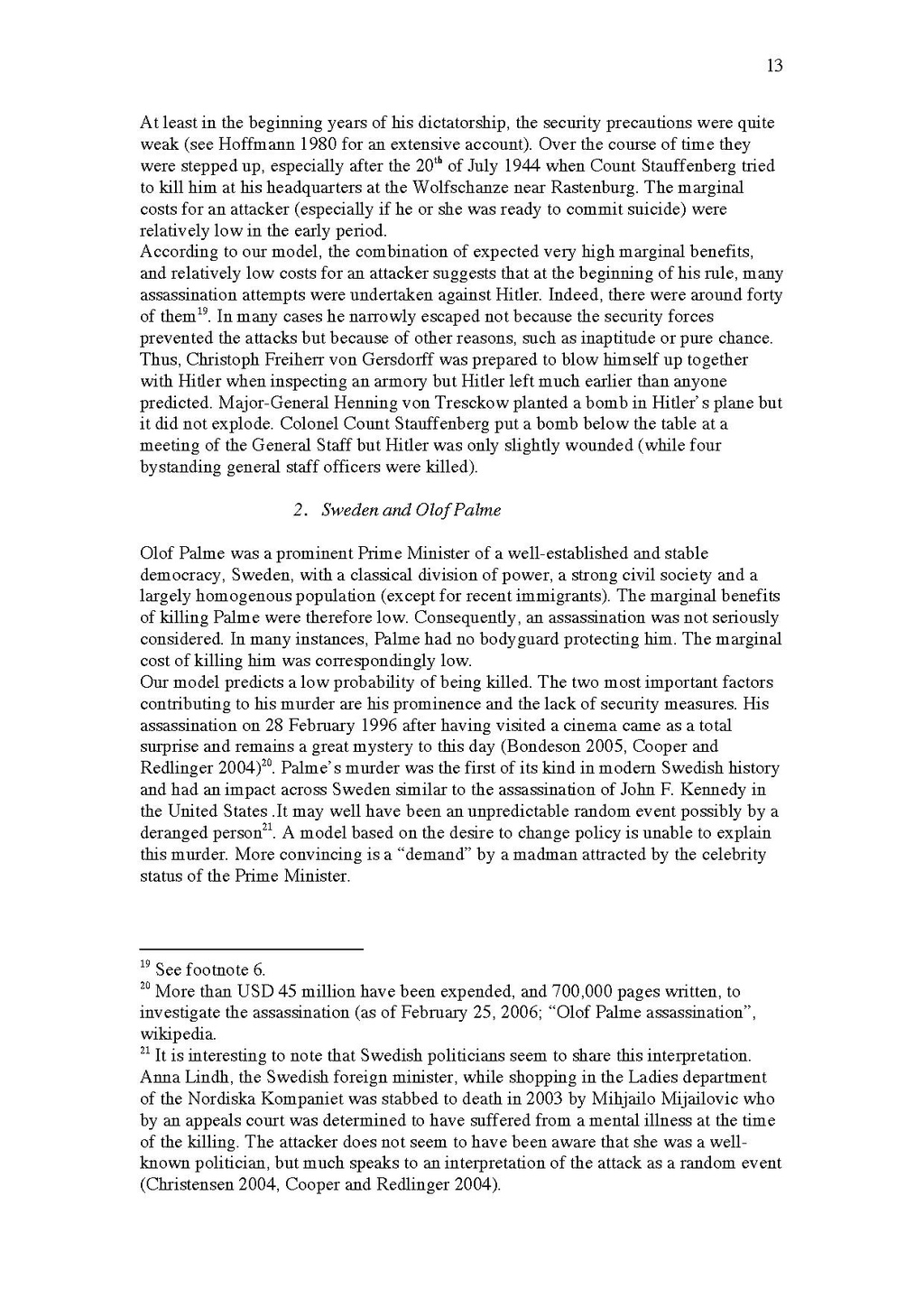At least in the beginning years of his dictatorship, the security precautions were quite
weak (see Hoffmann 1980 for an extensive account). Over the course of time they
were stepped up, especially after the 20th of July 1944 when Count Stauffenberg tried
to kill him at his headquarters at the Wolfschanze near Rastenburg. The marginal
costs for an attacker (especially if he or she was ready to commit suicide) were
relatively low in the early period.
According to our model, the combination of expected very high marginal benefits,
and relatively low costs for an attacker suggests that at the beginning of his rule, many
assassination attempts were undertaken against Hitler. Indeed, there were around forty
of them19. In many cases he narrowly escaped not because the security forces
prevented the attacks but because of other reasons, such as inaptitude or pure chance.
Thus, Christoph Freiherr von Gersdorff was prepared to blow himself up together
with Hitler when inspecting an armory but Hitler left much earlier than anyone
predicted. Major-General Henning von Tresckow planted a bomb in Hitler’s plane but
it did not explode. Colonel Count Stauffenberg put a bomb below the table at a
meeting of the General Staff but Hitler was only slightly wounded (while four
bystanding general staff officers were killed).
Olof Palme was a prominent Prime Minister of a well-established and stable
democracy, Sweden, with a classical division of power, a strong civil society and a
largely homogenous population (except for recent immigrants). The marginal benefits
of killing Palme were therefore low. Consequently, an assassination was not seriously
considered. In many instances, Palme had no bodyguard protecting him. The marginal
cost of killing him was correspondingly low.
Our model predicts a low probability of being killed. The two most important factors
contributing to his murder are his prominence and the lack of security measures. His
assassination on 28 February 1996 after having visited a cinema came as a total
surprise and remains a great mystery to this day (Bondeson 2005, Cooper and
Redlinger 2004)20. Palme’s murder was the first of its kind in modern Swedish history
and had an impact across Sweden similar to the assassination of John F. Kennedy in
the United States .It may well have been an unpredictable random event possibly by a
deranged person21. A model based on the desire to change policy is unable to explain
this murder. More convincing is a “demand” by a madman attracted by the celebrity
status of the Prime Minister.
19 See footnote 6.
20 More than USD 45 million have been expended, and 700,000 pages written, to
investigate the assassination (as of February 25, 2006; “Olof Palme assassination”,
wikipedia.
21 It is interesting to note that Swedish politicians seem to share this interpretation.
Anna Lindh, the Swedish foreign minister, while shopping in the Ladies department
of the Nordiska Kompaniet was stabbed to death in 2003 by Mihjailo Mijailovic who
by an appeals court was determined to have suffered from a mental illness at the time
of the killing. The attacker does not seem to have been aware that she was a well-
known politician, but much speaks to an interpretation of the attack as a random event
(Christensen 2004, Cooper and Redlinger 2004).
2. Sweden and Olof Palme
